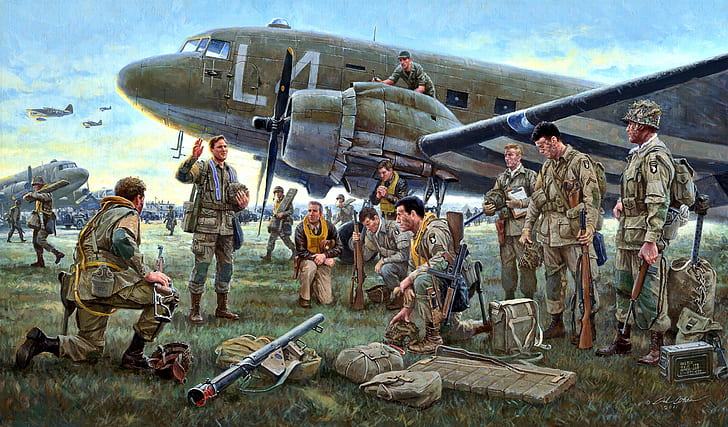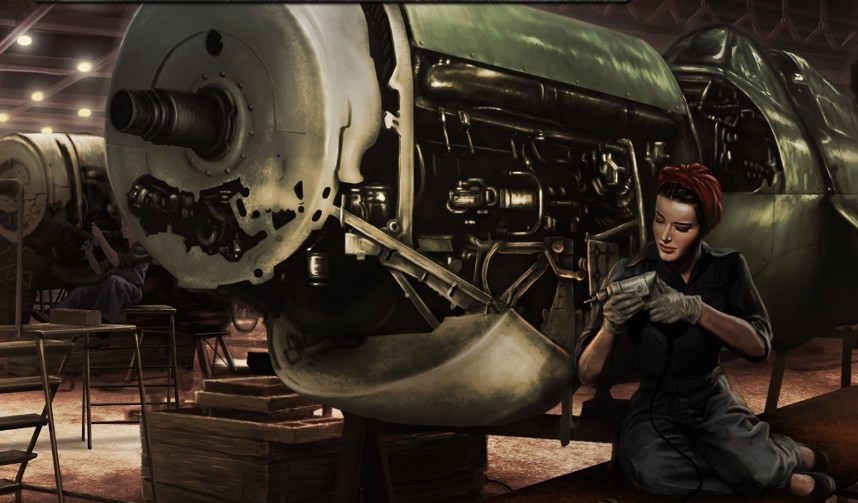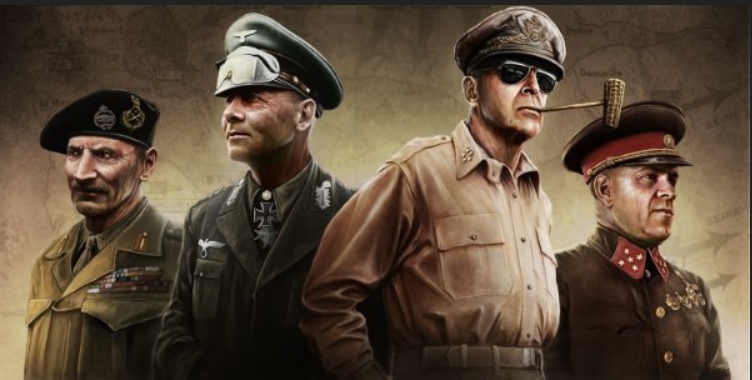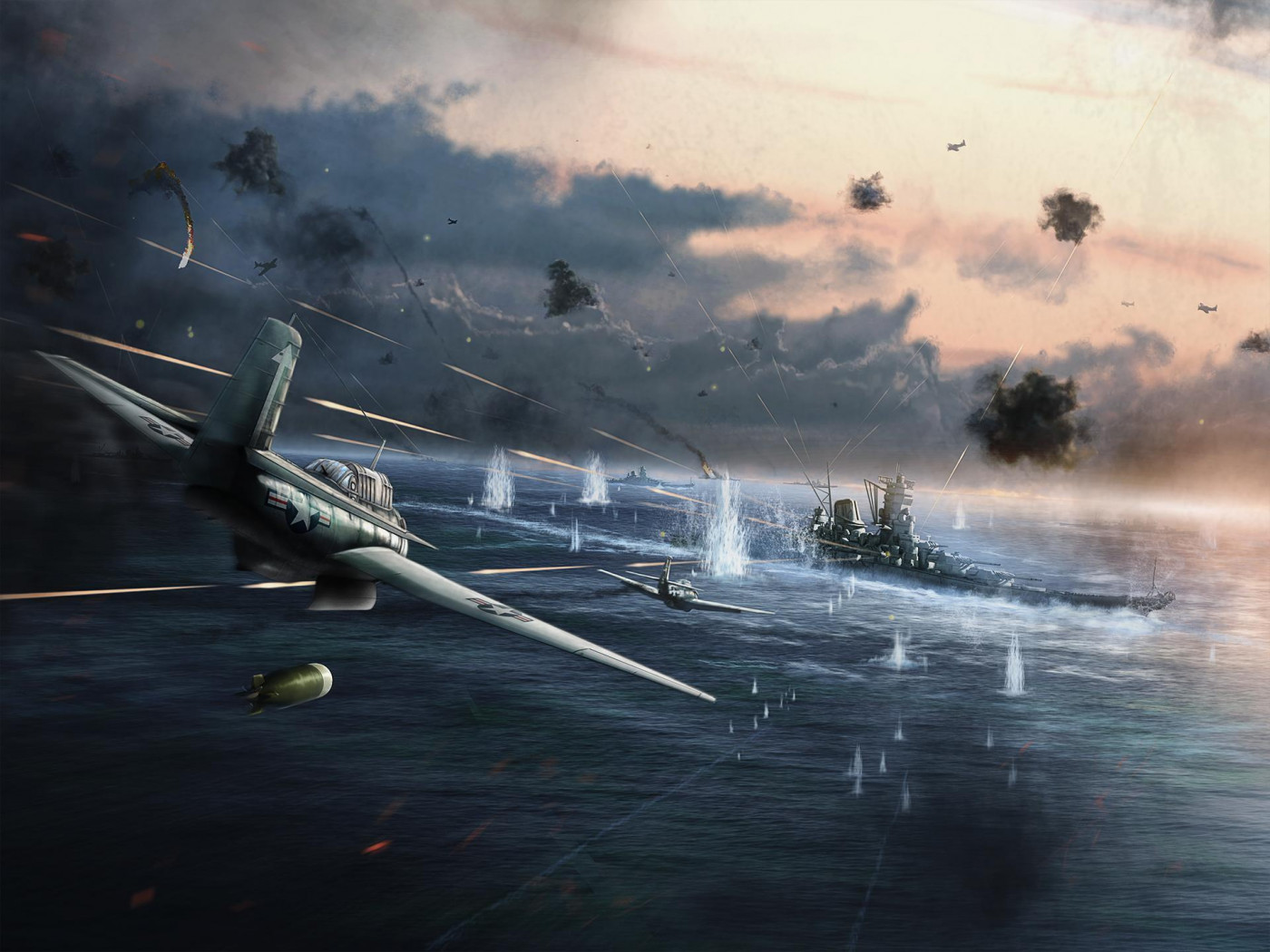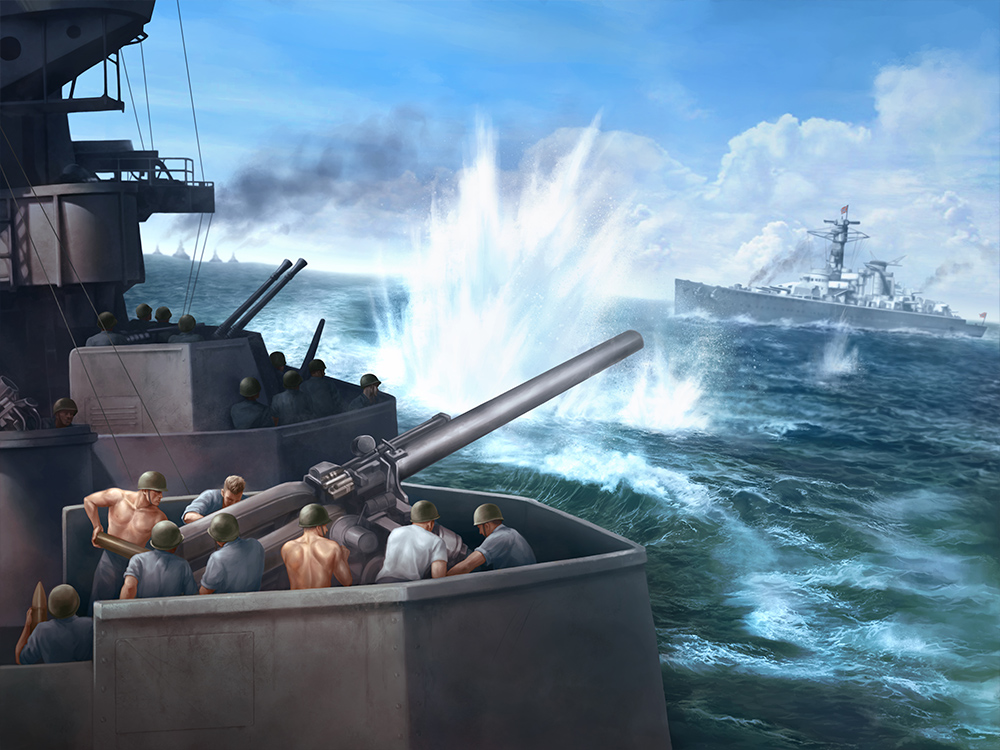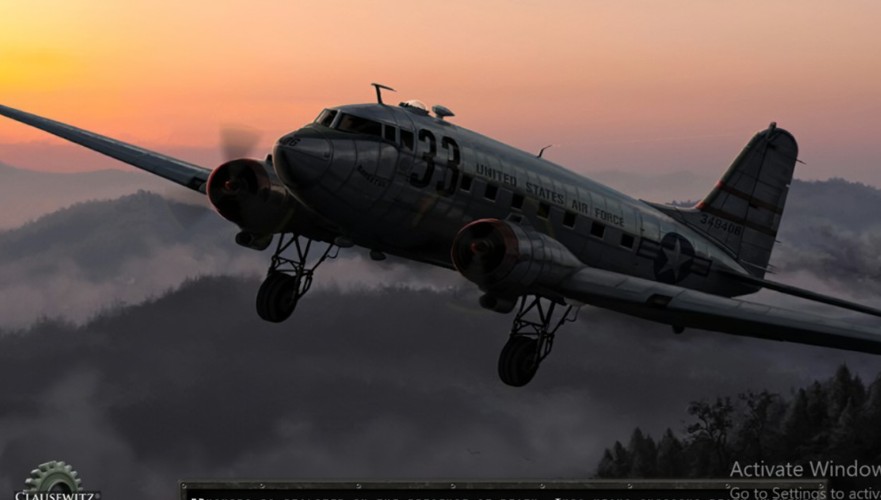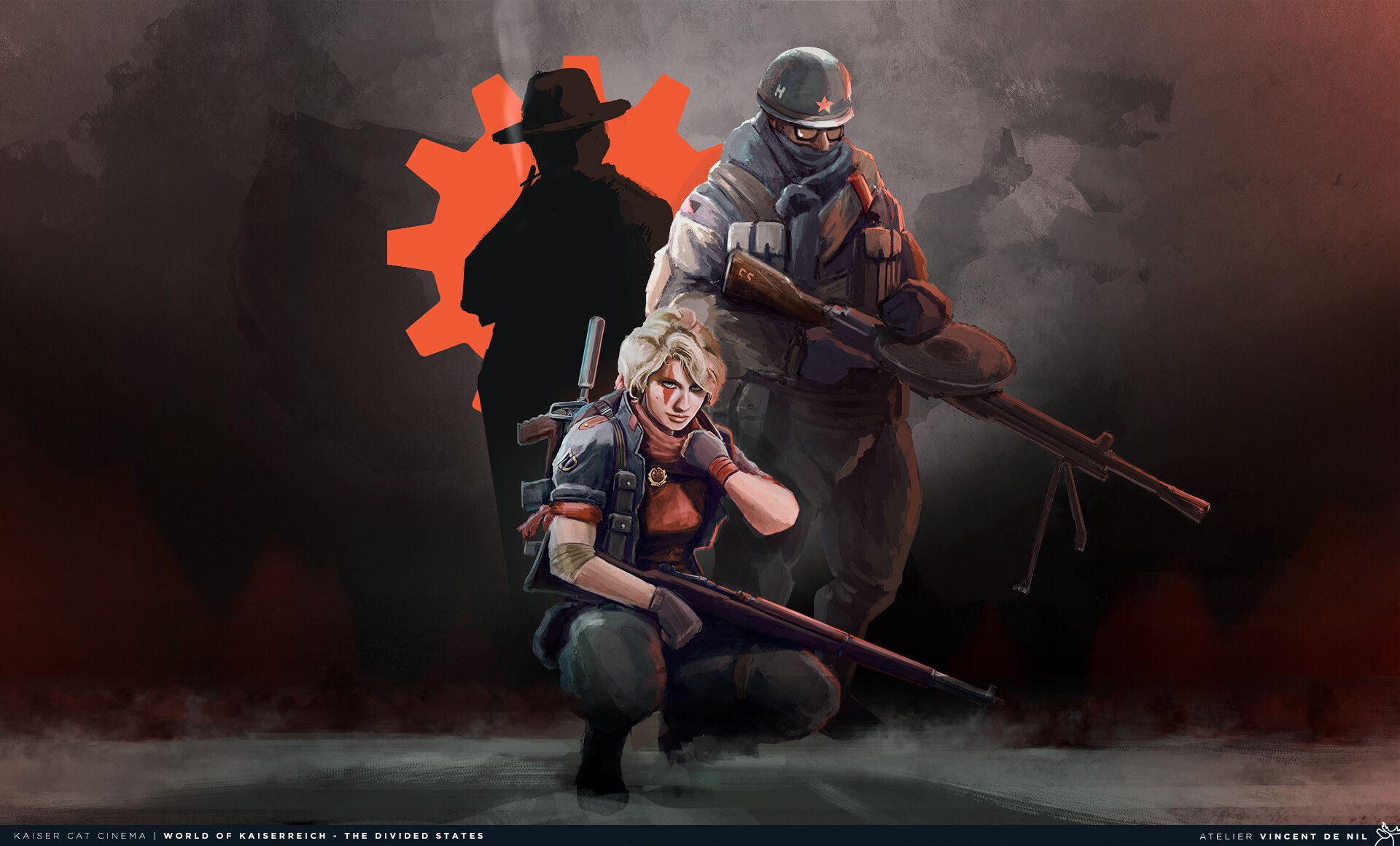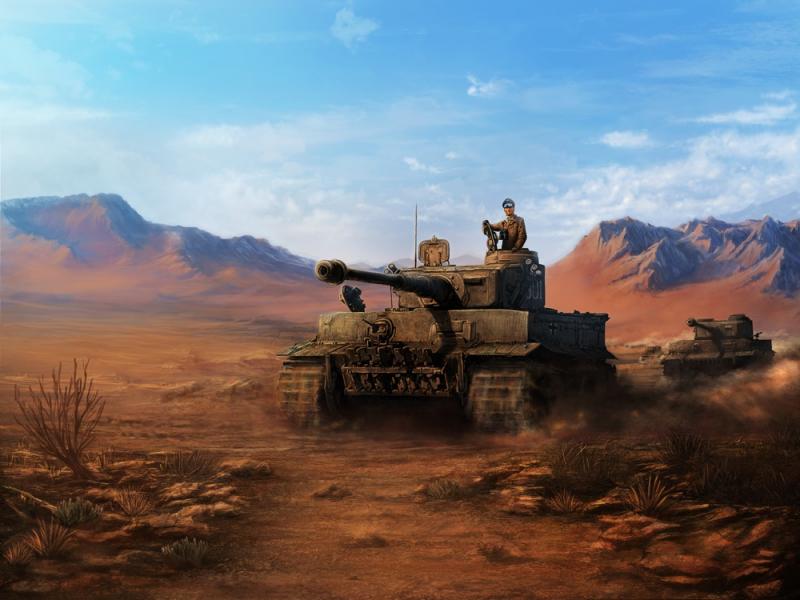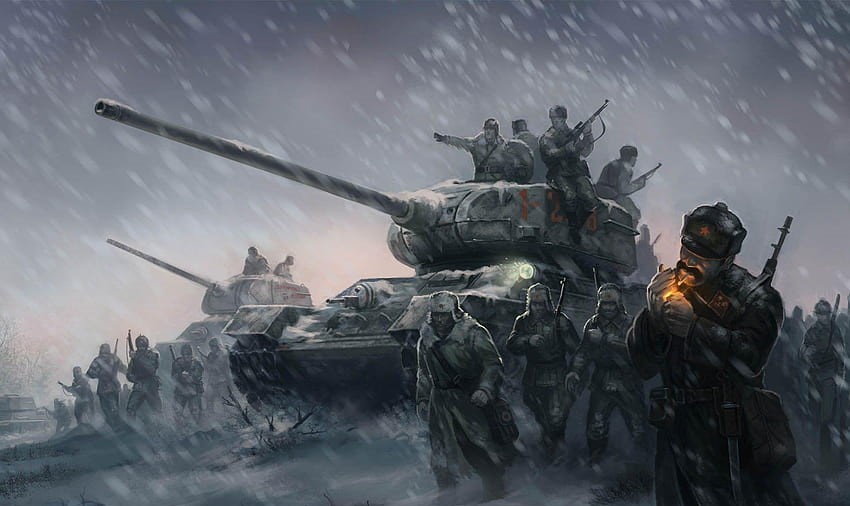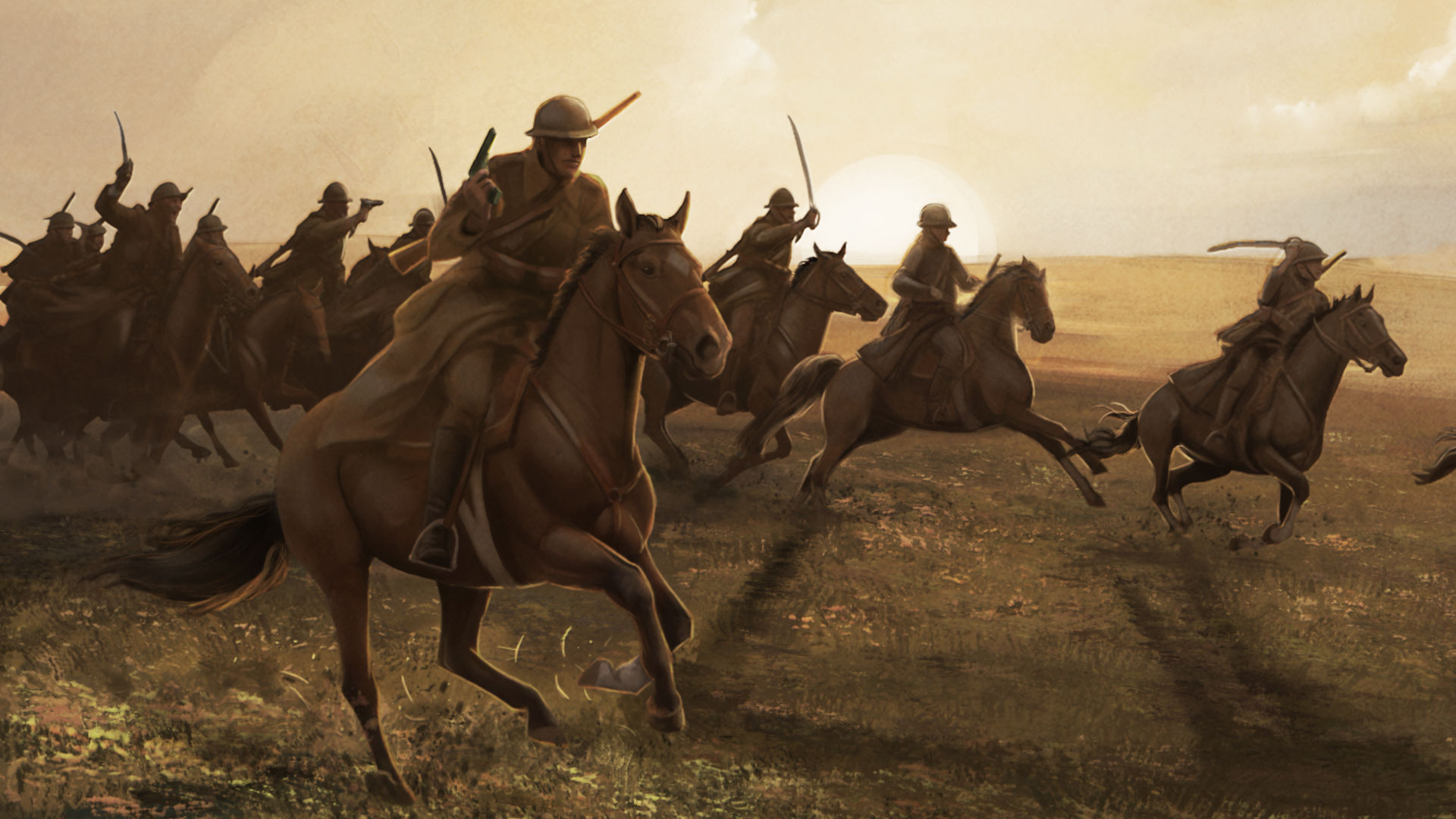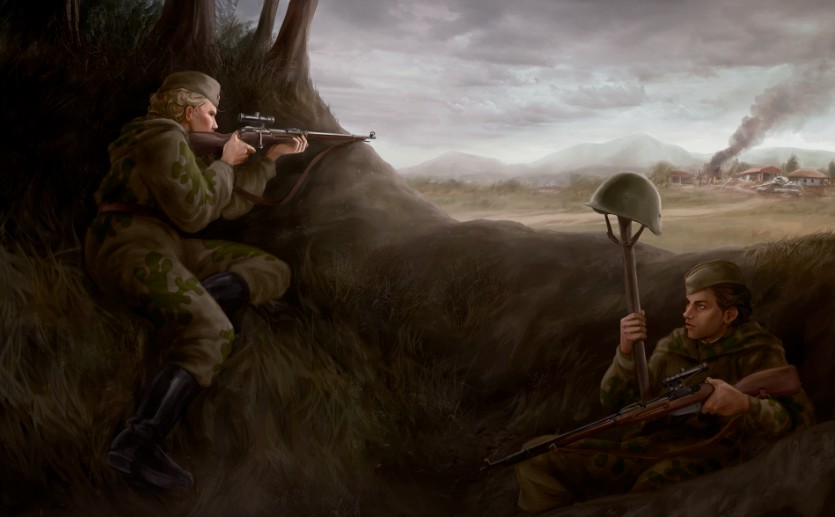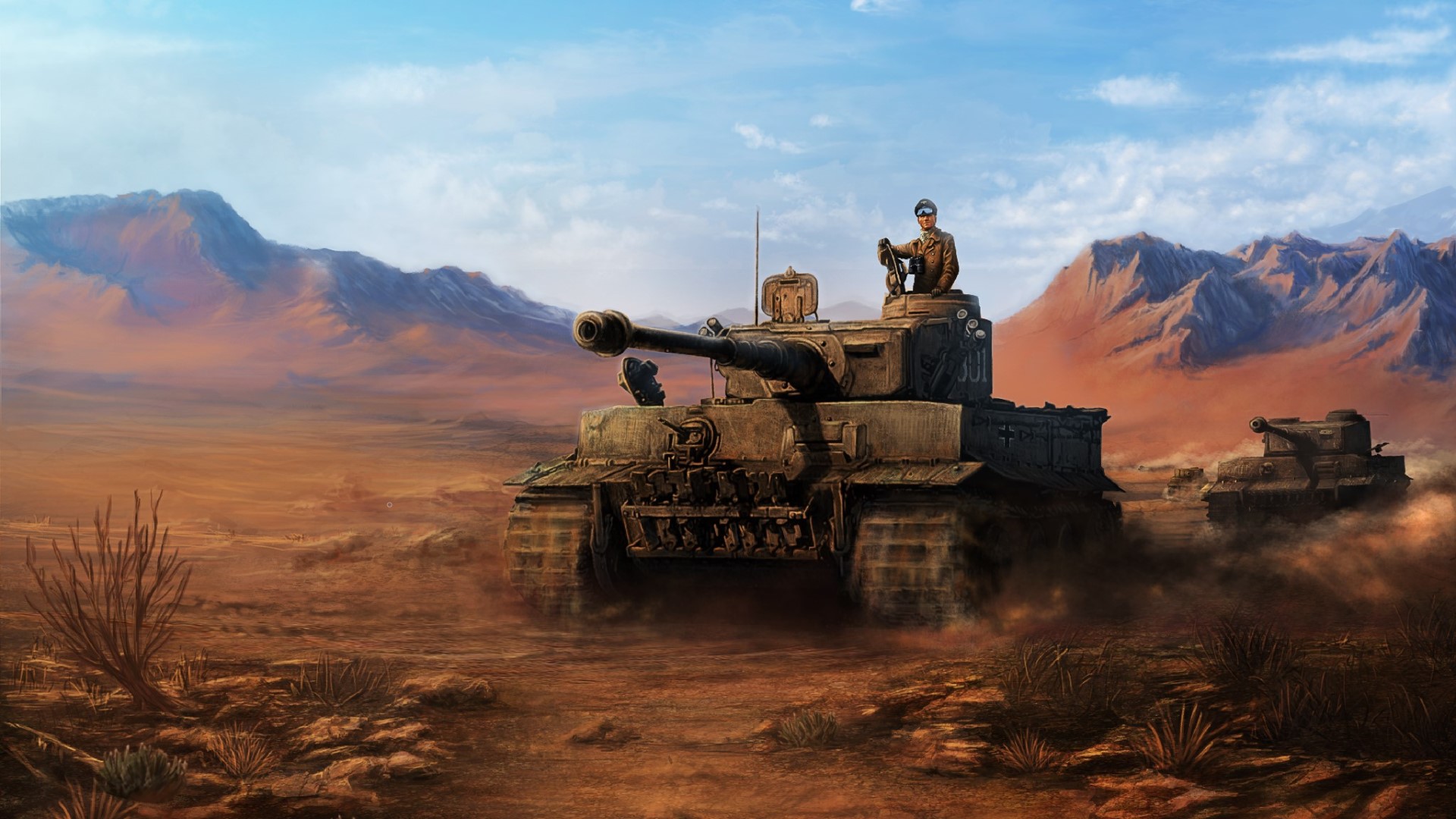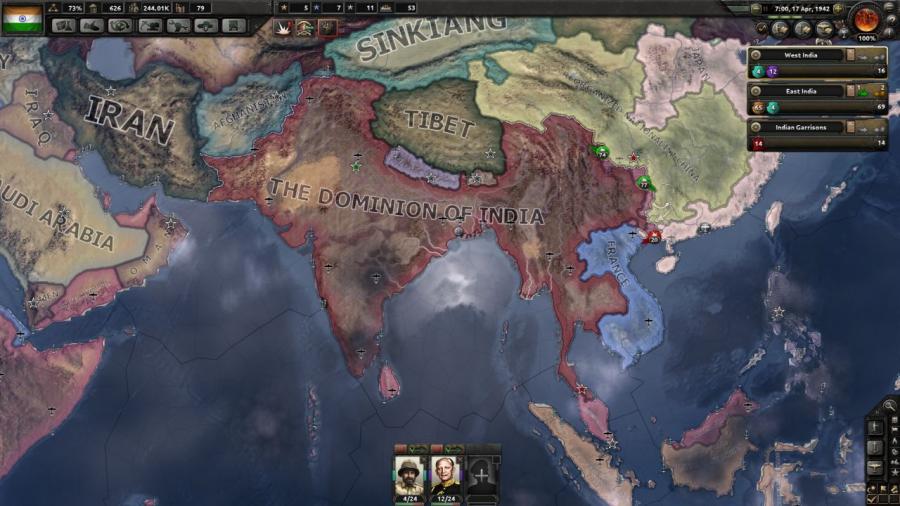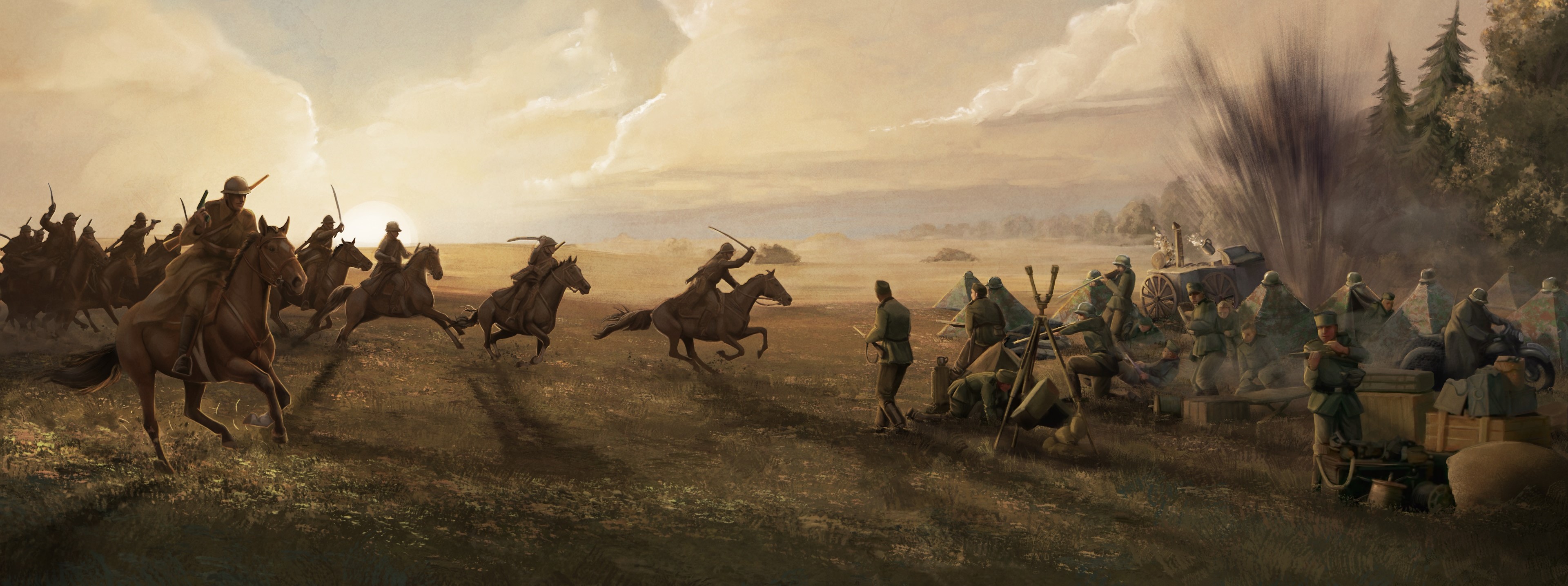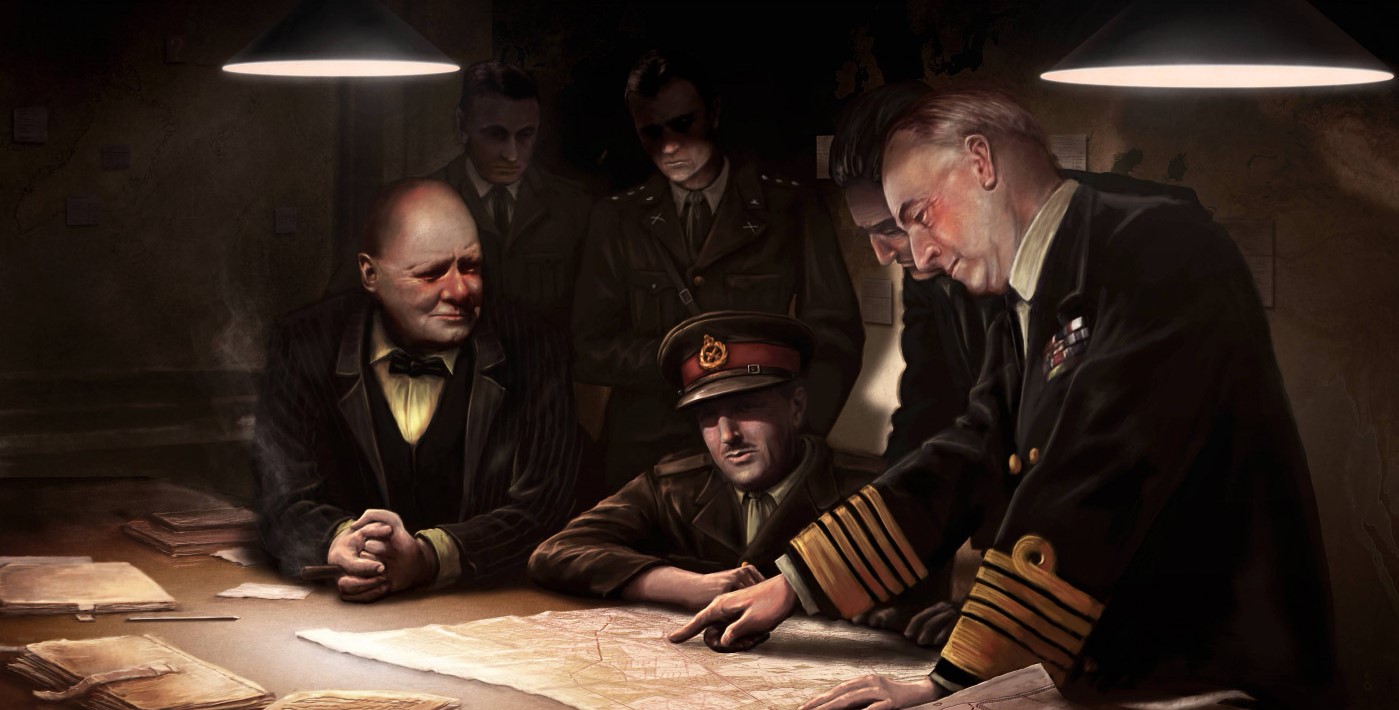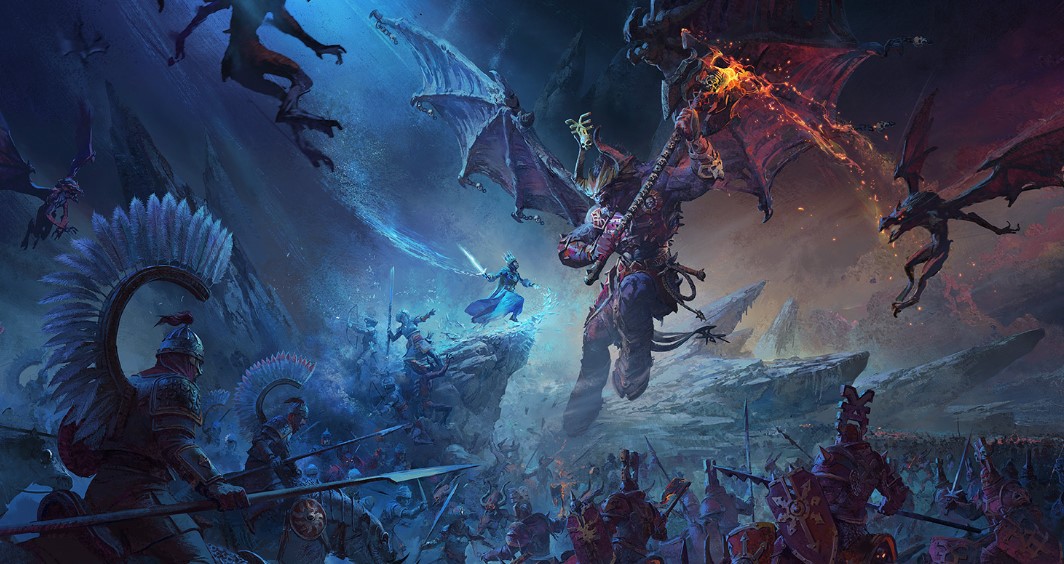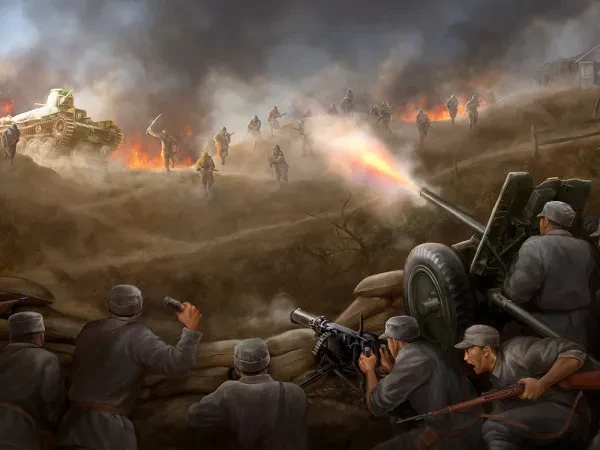
In Hearts of Iron IV, there are four unique land doctrines to choose from. They’re all exclusive, so if you pick one, you cannot pick the others. Each land doctrine has a specific battlefield playstyle in mind, with mobile warfare favoring heavy use of armored vehicles and mechanized infantry, while mass assault is great for nations with huge manpower reserves that just want to throw bodies at the issue.
That being said, some nations do start off with a land doctrine as per their historical tendencies. You can progress along the selected path already or switch to a different tree, though at the cost of your existing tree. Regardless, there is no correct path (cough, superior firepower), and the choice is entirely your own.
Mobile Warfare
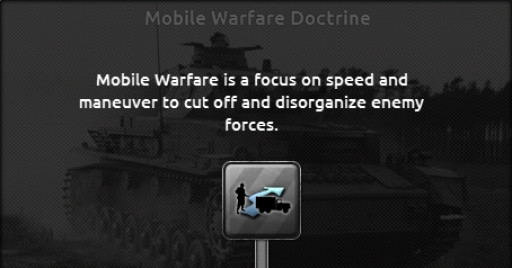
Mobile warfare emphasizes speed and maneuvers to outflank enemy forces, cause chaos, and ultimately encircle enemy forces for a quick victory. It was famously used by Germany during the Second World War, and it is the only nation to start off with this doctrine unlocked. As the name of the doctrine suggests, armored and mechanized/motorized units are the biggest beneficiaries of following this tree.
Later on in the tree, you can switch off to a more defensive approach to mimic Germany’s desperate situation by the end of the war or remain on the offensive if you have the industry or manpower to support such an endeavor.
Doctrine Strengths:
- Is aimed at armored, mechanized, and motorized units; they have the biggest buffs out of all units when taking this doctrine.
- Great at reducing planning time; thanks to the doctrine emphasizing speed, planning time to get the maximum bonus is reduced.
- Can offer good defensive bonuses later on in the doctrine; the desperate defense doctrine can help replenish the manpower pool should you find yourself on the backfoot.
- Great for offensive actions; as the name suggests, the doctrine is best suited when on the offense and taking the initiative against the opponent.
- Good for spamming mechanized/motorized infantry; the motorized infantry side provides so many bonuses to the unit that it can serve as a good alternative to armored units.
Doctrine Weaknesses:
- They are not properly utilized when on the defensive; while capable of being on the defense, the tactics of the doctrine favor an offensive action instead.
- No battleplan bonus; the bonus is only to planning speed, not the max bonus. So it’s better to launch another attack as soon as possible.
- No artillery bonus; there are no bonuses to artillery units, which are one of the best units for producing soft attack.
- Slow in the late game; while the early game bonuses are great, the late game is somewhat lacking in comparison.
- It focuses too much on unit organization; there are barely any other benefits to motorized and mechanized infantry aside from organization.
Why you should pick this doctrine:
- You intend to play with an armored or mechanized-based army; this doctrine is very much suited for nations that want to play like Germany did historically.
- You can micromanage; the speed of your units will likely force you to micromanage enemy pockets behind your front lines and quickly get rid of them before they have a chance to break out.
- Your industry can support the demands of an armored army; since the doctrine requires a lot of vehicles, you need to make sure your industry can both support the equipment and fuel requirements in order to take full advantage of this doctrine.
Superior Firepower
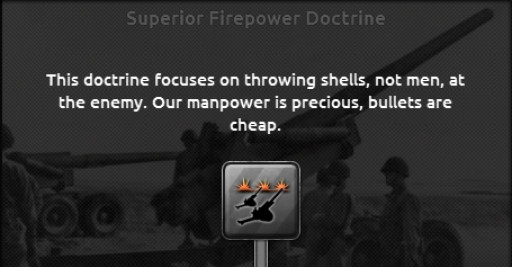
Superior Firepower, like the name suggests, focuses on building superior equipment for the opponent and using it to pound the enemy to submission. Historically, both the US and Yugoslavia started with this doctrine unlocked, although it’s the former that’s famous for truly utilizing it.
Later on, you can choose between either a shock and awe strategy (used by the United States during the Gulf War) or a combined arms approach, which seeks to incorporate your air force into the equation.
Doctrine Strengths:
- Well-rounded strengths; unlike the previous doctrine, superior firepower likes to spread out across various units.
- Soft attack is evenly increased across various units; this includes the likes of infantry, artillery, support companies, and all frontline companies.
- Great when used with a nation that has a strong industry; a large industry is needed to maintain the constant equipment needs and upgrades to keep the units at the top of their game.
- They are great for both defensive and offensive actions; since the doctrine focuses on utilizing superior troops and equipment, they are well suited for either offensive or defensive actions.
- Works well if you favor artillery; they are the only land doctrine to favor artillery bonuses.
Doctrine Weaknesses:
- No speed bonuses; this doctrine favors superior firepower, so once an enemy is routed, there is no need to pursue and encircle them.
- Demands a lot in equipment; as stated, the necessity of constantly supplying the entire army with top-of-the line equipment may be taxing for some nations.
- No battleplan bonuses can be found, so the player has to settle for the default bonus when using this doctrine.
- No speciality; due to the spread-out nature of the bonuses, there are no special units who command the lion’s share of the buffs and can act as the spearhead of every assault.
- Does not grant any manpower bonuses; there will be no extra manpower when taking this doctrine, as it does not favor acquiring manpower just for the sake of doing so.
Why you should pick this doctrine:
- You intend to play like the United States and attack with overwhelming force; this strategy was used historically and can easily be replicated by any nation with a good industry.
- You prefer a spread-out bonus system; instead of relying on a single unit for all, you have more options in terms of beating back the enemy.
- You have a limited manpower pool; as the doctrine favors equipment over manpower, you should be using this doctrine when attempting to save as much manpower as possible.
Grand Battleplan
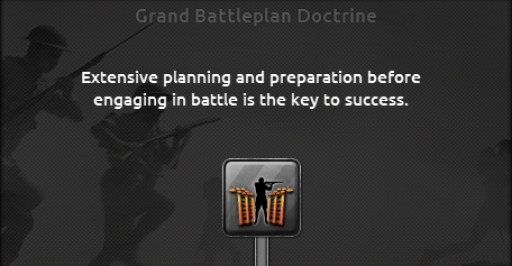
The Grand Battleplan is the favored and historical land doctrine of most of the world, including the British Commonwealth, France, Japan, Italy, and Poland. All the aforementioned countries start with this doctrine, as it’s seen as the traditional train of thought of most military theorists following the end of the Great War.
The doctrine heavily favors a patient planning system focusing on the defense, though later on, you are able to choose between either a steady all-around bonus or an infiltration strategy that aims to push behind enemy lines.
Doctrine Strengths:
- Great when in the hands of a patient player; since the doctrine has a lot of buffs related to the planning bonus, the player must be patient to acquire them all before launching an assault.
- When intending to play a defense-first approach, the defensive bonuses early on will prove vital to stopping enemy attacks and eventually allowing your fully enhanced units to launch a counterattack.
- Good spread of bonuses: when taking the assault strategy, you are able to spread out your bonuses across various units, giving you more flexibility.
- Infiltration trees are great both for RP and outflanking attacks; their bonuses, including the reduction in supply consumption, are perfect for units seeking to outflank the enemy.
- Great planning bonus: as the name of the doctrine suggests, they have the best planning bonus both in terms of max planning and planning speed.
Doctrine Weaknesses:
- Does not suit a more aggressive player; the planning bonuses can take quite some time to accumulate and will not be great when the player intends to keep their foot on the pedal.
- Too spread out bonuses; the spread out bonuses make the already limited possible buffs here unnoticeable in each unit.
- Requires a lot of CP; if the player intends to make use of the full planning bonus, you may need a lot of CP in order to take the quick planning decision. This may result in the loss of leaders in military command.
- No manpower bonus; like the Superior Firepower doctrine, this one does not have any buffs for its manpower pool, so acquiring more units may be a challenge in the future.
- Weak offensive buffs early in the game; the poor offensive buffs may limit the player to remaining on the defensive until the doctrine is fully unlocked.
Why you should pick this doctrine:
- You intend to control the pace of the game and can stomach a slow, grinding game; the planning bonuses necessitate that the player only attack once the plan is fully prepared.
- Manpower is vital to you; this doctrine is great for those who lack manpower due to the defensive bonuses early on and plan to use the planning bonuses in order to inflict as many casualties while keeping their own at a minimal level.
- You are a great micromanager; the planning bonus can only be fully utilized on one tile, so having focus is vital for every player taking this doctrine.
Mass Assault
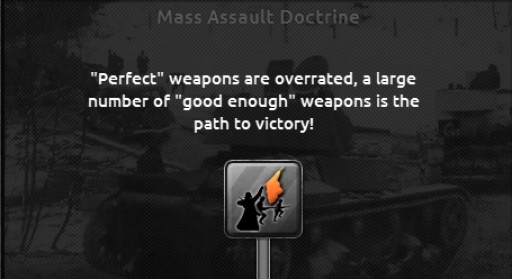
Mass Assault is the doctrine favored by nations with a large manpower reserve (i.e., the Soviet Union, Communist China, and Nationalist China), whose main tactic is to simply throw bodies at the enemy till the problem fixes itself. To fully take advantage of this doctrine, the player must be willing to throw his troops at the enemy until one breaks.
Typically used as a last-second option, nations that are desperate for manpower can switch to the mass mobilization tree for a quick fix to their manpower woes. Otherwise, they can go along the deep battle tree for a more modern approach to warfare (as taken by the Soviet Union following and during the war).
Doctrine Strengths:
- Manpower: they simply grant so much in manpower that it won’t be an issue with a large and very large nation.
- Combat width: they are the only doctrine to reduce the combat width of their units, allowing for more to join the fight while still maintaining the ideal combat width.
- Very good reinforcement rate; especially if you unlock radio, you’ll find that the reinforcement rate in this doctrine is much superior to any other doctrines.
- Weekly war support; they are the only doctrine to even offer this kind of buff, which is great for maintaining strong stability and war support.
- There are great benefits to out-of-supply units and grace periods; they essentially enable your troops who are currently cut off to still fight as if they're at full strength or close to it
Doctrine Weaknesses:
- No bonus to speed; like all other doctrines, this one does not hold any speed bonus.
- Heavily infantry-focused; if you’re playing with a nation favoring an armored approach, you’re doing something wrong if you chose the mass assault doctrine.
- There is barely an offensive bonus; the only bonus here is for the organization of troops, nothing else.
- There is no benefit to being on the defense; there is no entrenchment bonus attached to this doctrine.
- The mass mobilization tree is somewhat weak; this is due to the main focus of the tree going into the recruitment of soldiers and not the training of said units.
Why you should pick this doctrine:
- You want to play as a big nation; never ever try this doctrine if you plan to play as a minor nation, as you won’t be able to sustain such an effort long term.
- You’re needing manpower right away; in case you’re out of manpower, this doctrine can do wonders in getting you more, as long as you follow the right path.
- You can stand to look at your casualties; this doctrine basically dictates that you launch continual assaults and not give them any second thought.

